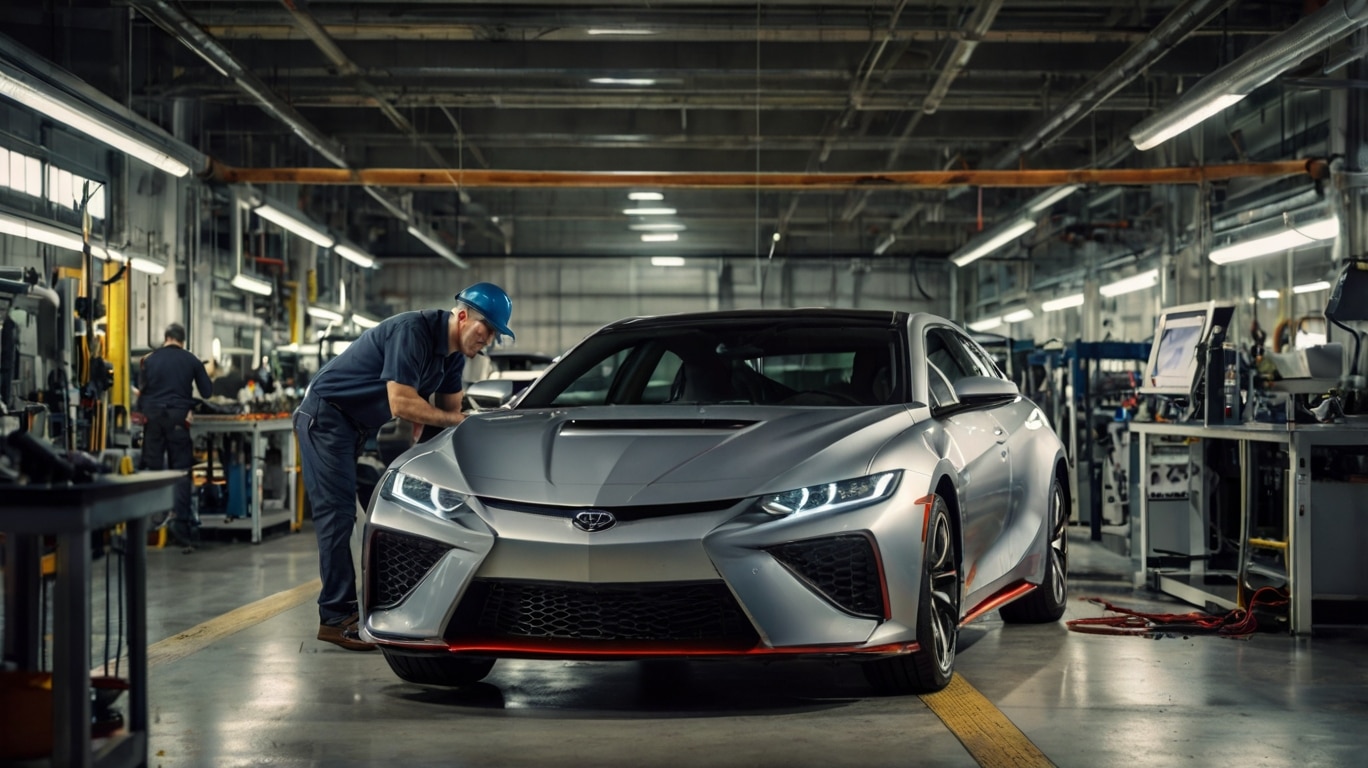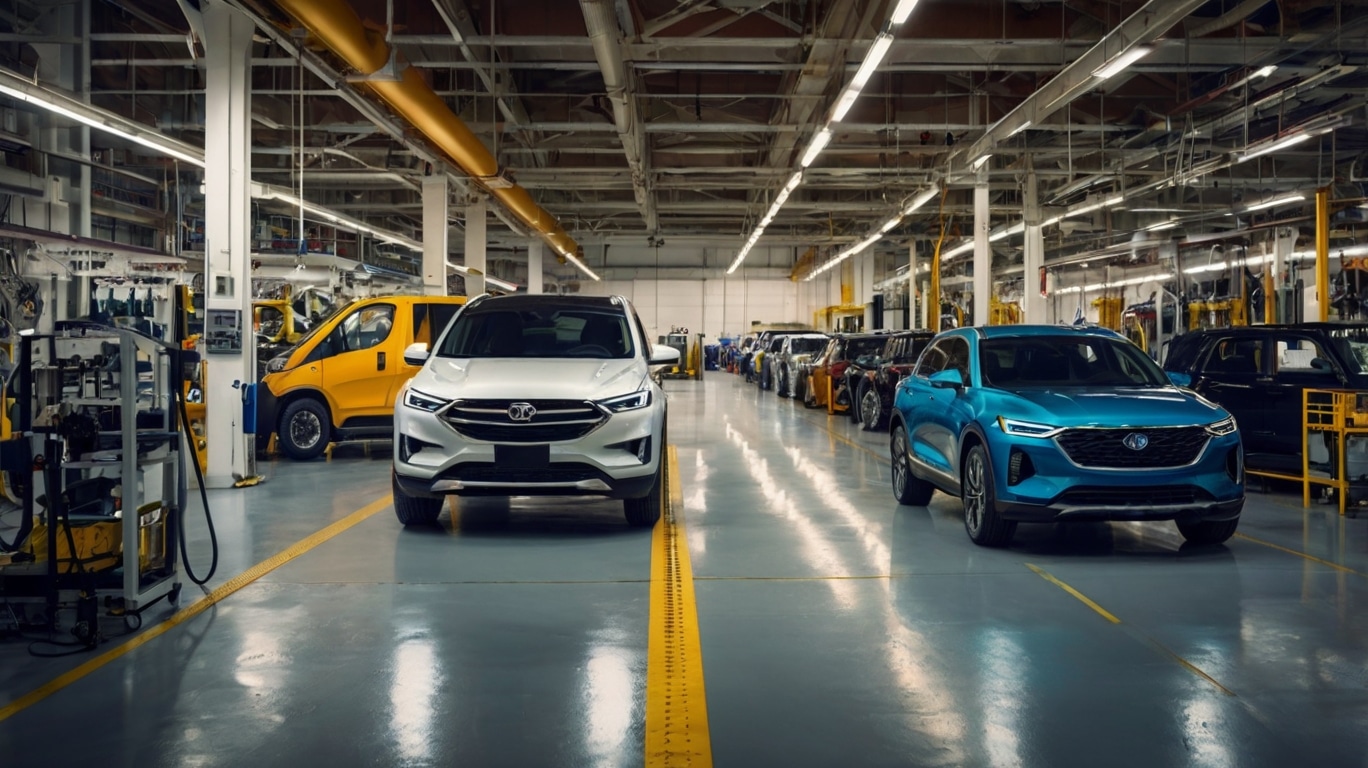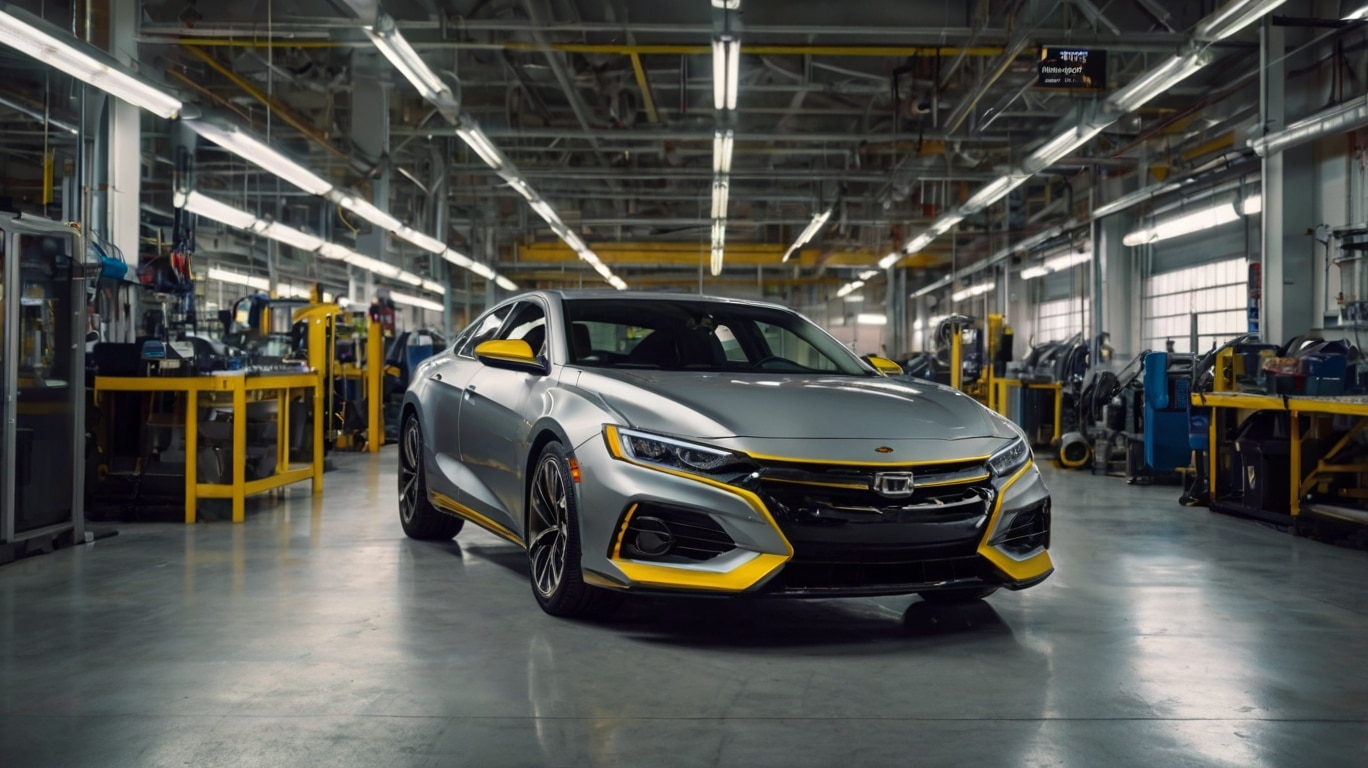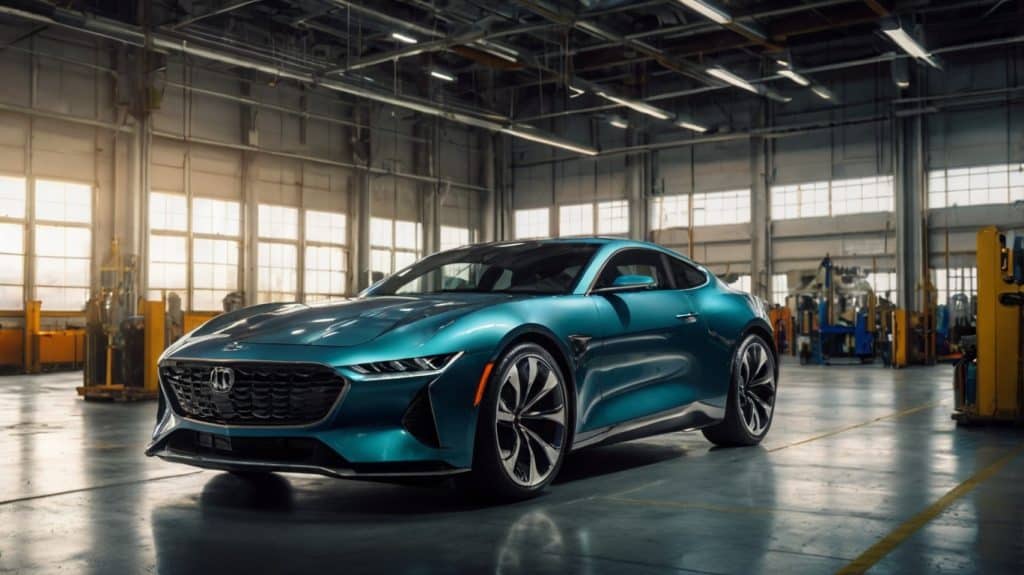American Car Industry Trends 2024: Navigating the Future of Mobility
The American car industry is on the cusp of transformative change as we enter 2024. This year marks a pivotal moment as automakers and consumers alike grapple with rapid technological advancements, shifting consumer preferences, and evolving regulatory landscapes. From the rise of electric vehicles (EVs) to advancements in autonomous driving technology, several key trends are shaping the future of the automotive sector. This comprehensive guide explores the major trends influencing the American car industry in 2024, offering insights into what’s driving these changes and what they mean for consumers and manufacturers.
1. The Rise of Electric Vehicles (EVs)
Growing Popularity and Market Expansion
Electric vehicles continue to gain traction in the American car market. In 2024, this trend is more pronounced than ever, driven by several factors:
- Increased Consumer Awareness: As environmental concerns become more pressing, American consumers are increasingly aware of the benefits of EVs. Lower emissions, reduced fuel costs, and improved sustainability are key factors driving the shift towards electric mobility.
- Enhanced Vehicle Options: Automakers are expanding their EV offerings to cater to a broader range of consumer preferences. From compact city cars to luxury SUVs and performance-oriented models, the variety of electric vehicles available is growing rapidly.
- Government Incentives: Federal and state-level incentives play a significant role in promoting EV adoption. Tax credits, rebates, and grants for EV infrastructure development are making electric cars more accessible and appealing to a wider audience.
Technological Advancements

- Battery Technology: Advances in battery technology are enhancing the performance and range of electric vehicles. Solid-state batteries and improved lithium-ion batteries are contributing to longer driving ranges and faster charging times, addressing two major concerns for potential EV buyers.
- Charging Infrastructure: The expansion of charging networks is crucial for the widespread adoption of EVs. In 2024, significant investments are being made in building out public and private charging stations, making it easier for EV owners to charge their vehicles conveniently and efficiently.
Major Players and New Entrants
- Established Automakers: Traditional automakers are accelerating their transition to electric mobility. Companies like Tesla, Ford, General Motors, and Volkswagen are expanding their electric vehicle portfolios and investing in new technologies.
- New Entrants: The entry of new players into the electric vehicle market is further driving innovation. Companies such as Rivian, Lucid Motors, and NIO are making waves with their innovative designs and advanced technology, challenging established brands and offering consumers more choices.
2. Advancements in Autonomous Driving Technology
Progress in Self-Driving Capabilities
Autonomous driving technology is making significant strides in 2024, with advancements that promise to revolutionize how we travel. Key developments include:
- Enhanced Safety Features: The integration of advanced driver-assistance systems (ADAS) is improving vehicle safety. Features such as adaptive cruise control, lane-keeping assist, and automatic emergency braking are becoming more sophisticated, contributing to a safer driving experience.
- Level 4 and 5 Automation: While fully autonomous vehicles (Level 5) are still on the horizon, Level 4 automation—where vehicles can operate autonomously in specific conditions without human intervention—is becoming increasingly feasible. Several automakers and tech companies are testing and deploying vehicles with advanced autonomous capabilities.
Regulatory and Ethical Considerations
- Regulatory Frameworks: The development of autonomous driving technology requires clear regulatory frameworks to ensure safety and consistency. In 2024, regulatory bodies are working to establish guidelines and standards for autonomous vehicles, addressing issues related to safety, liability, and data privacy.
- Ethical Implications: The ethical considerations of autonomous driving technology are a topic of ongoing debate. Decisions regarding how autonomous vehicles should prioritize safety in emergency situations and the implications of data collection are critical issues that need to be addressed as the technology evolves.
Industry Leaders and Innovations
- Tech Giants and Startups: Companies such as Waymo (a subsidiary of Alphabet), Cruise (a subsidiary of General Motors), and Aurora are at the forefront of autonomous driving technology. These companies are developing and testing innovative solutions to advance the capabilities of self-driving vehicles.
- Automaker Collaborations: Traditional automakers are partnering with technology firms to accelerate the development of autonomous driving systems. Collaborations between companies like Ford and Argo AI, as well as BMW and Intel, are driving progress in this area.
3. The Shift Toward Sustainable and Green Technology
Environmental Responsibility
Sustainability is becoming a central focus for the American car industry, driven by growing environmental concerns and consumer demand for greener options. Key trends include:
- Hydrogen Fuel Cells: In addition to electric vehicles, hydrogen fuel cell technology is gaining traction as a clean energy alternative. Hydrogen-powered vehicles offer long driving ranges and quick refueling times, making them a viable option for certain applications.
- Recycled and Sustainable Materials: Automakers are increasingly incorporating recycled and sustainable materials into their vehicle designs. From eco-friendly interiors to lightweight materials that improve fuel efficiency, sustainability is becoming a key consideration in vehicle manufacturing.
Circular Economy Initiatives
- Vehicle Recycling: The concept of a circular economy is influencing the automotive industry, with a focus on recycling and reusing materials. Automakers are exploring ways to recycle components and materials from end-of-life vehicles to reduce waste and environmental impact.
- Battery Recycling: As the adoption of electric vehicles grows, so does the need for effective battery recycling solutions. Companies are investing in technologies to recycle and repurpose lithium-ion batteries, reducing the environmental impact of battery disposal.
4. Connected and Smart Vehicles

Integration of Technology
The integration of technology into vehicles is enhancing the driving experience and offering new functionalities. Key developments in connected and smart vehicles include:
- Vehicle-to-Everything (V2X) Communication: V2X technology enables vehicles to communicate with each other, infrastructure, and pedestrians. This connectivity enhances safety, improves traffic management, and supports the development of autonomous driving systems.
- In-Car Infotainment Systems: Modern vehicles are equipped with advanced infotainment systems that offer seamless connectivity, entertainment options, and navigation features. The integration of voice recognition, smartphone connectivity, and over-the-air updates is transforming the in-car experience.
Data Privacy and Security
- Cybersecurity Measures: As vehicles become more connected, cybersecurity is a critical concern. Automakers are investing in robust security measures to protect against cyber threats and ensure the safety of vehicle data and systems.
- Data Privacy Regulations: The collection and use of vehicle data raise privacy concerns. Regulatory bodies and industry stakeholders are working to establish guidelines and standards for data privacy, ensuring that consumers’ information is protected.
5. The Evolution of Mobility Services
Changing Mobility Preferences
Consumer preferences are shifting towards new mobility solutions that offer convenience, flexibility, and cost-effectiveness. Key trends include:
- Ride-Sharing and Car-Sharing: Ride-sharing and car-sharing services are becoming increasingly popular, providing an alternative to traditional car ownership. Companies like Uber, Lyft, and Zipcar are expanding their offerings, catering to urban consumers who seek convenient and affordable transportation options.
- Subscription Services: Automotive subscription services are gaining traction as an alternative to traditional car ownership. These services offer flexible access to a range of vehicles, allowing consumers to switch between different models and configurations based on their needs.
Urban Mobility and Smart Cities
- Smart City Initiatives: The development of smart cities is influencing the automotive industry, with a focus on improving urban mobility and reducing congestion. Smart infrastructure, such as intelligent traffic management systems and connected parking solutions, is enhancing the efficiency of urban transportation.
- Micromobility Solutions: Micromobility solutions, including electric scooters and bicycles, are becoming popular in urban areas. These options provide a convenient and eco-friendly way to navigate short distances, complementing traditional transportation methods.
6. Consumer Preferences and Market Dynamics
Shifting Consumer Demographics
Consumer preferences are evolving, with younger generations and diverse demographics influencing the car market. Key trends include:
- Young Consumers and Technology: Younger consumers are driving demand for advanced technology and connectivity features. They prioritize tech-savvy vehicles that offer seamless integration with their digital lifestyles.
- Diverse Preferences: The growing diversity of the American population is reflected in the variety of vehicle preferences. Automakers are catering to different cultural and lifestyle needs, offering a range of vehicles that appeal to diverse consumer segments.
Impact of Economic Factors
- Economic Uncertainty: Economic factors, such as inflation and interest rates, can impact consumer spending and vehicle purchasing decisions. Automakers are adapting their strategies to address economic uncertainties and offer value-driven solutions to consumers.
- Fuel Prices and Efficiency: Fluctuations in fuel prices continue to influence consumer preferences. Vehicles with better fuel efficiency and alternative powertrains, such as hybrids and electrics, are increasingly attractive to cost-conscious buyers.
Conclusion
The American car industry in 2024 is undergoing a period of profound change, driven by technological advancements, shifting consumer preferences, and a focus on sustainability. From the rise of electric vehicles and advancements in autonomous driving technology to the integration of smart technology and evolving mobility services, these trends are shaping the future of mobility.
As consumers and manufacturers navigate this dynamic landscape, staying informed about these trends is crucial for making informed decisions and embracing the opportunities that lie ahead. Whether you’re considering an electric vehicle, exploring new mobility solutions, or simply staying updated on industry developments, understanding these trends will help you navigate the future of the American car industry with confidence.
7. The Role of Artificial Intelligence (AI) and Machine Learning
AI Integration in Vehicles
Artificial Intelligence (AI) and machine learning are increasingly becoming integral to modern vehicles. These technologies are transforming various aspects of automotive design, manufacturing, and user experience. Key areas where AI is making an impact include:
- Advanced Driver Assistance Systems (ADAS): AI-powered ADAS features, such as automatic emergency braking, adaptive cruise control, and lane-keeping assist, are enhancing vehicle safety. AI algorithms analyze data from sensors and cameras to make real-time decisions, improving overall driving safety and convenience.
- Predictive Maintenance: Machine learning algorithms are being used to predict vehicle maintenance needs based on driving patterns, usage data, and historical performance. This proactive approach helps prevent breakdowns and reduces maintenance costs by addressing issues before they become critical.
- Personalized User Experience: AI is enabling a more personalized driving experience by learning driver preferences and adapting vehicle settings accordingly. Features such as personalized climate control, seat adjustments, and infotainment options are tailored to individual driver needs.
The Future of AI in Automotive
- Autonomous Driving: AI is at the heart of autonomous driving technology, enabling vehicles to navigate complex environments and make driving decisions without human intervention. Continued advancements in AI will drive the development of fully autonomous vehicles and revolutionize transportation.
- Voice and Gesture Control: AI-powered voice recognition and gesture control systems are enhancing in-car interactions. Drivers can control various vehicle functions using natural language commands or hand gestures, improving convenience and safety while minimizing distractions.
8. The Shift Towards Digital and Virtual Retail Experiences
Changing Retail Landscapes
The automotive retail experience is evolving rapidly, with digital and virtual solutions becoming increasingly important. Key trends in this area include:
- Online Vehicle Purchases: The rise of e-commerce has extended to the automotive sector, with many consumers opting to purchase vehicles online. Online platforms provide a convenient way to browse inventory, compare models, and complete transactions without visiting a dealership in person.
- Virtual Showrooms: Virtual showrooms and online configurators allow customers to explore vehicle options and features in a digital environment. These tools provide a detailed view of available configurations, colors, and accessories, enhancing the shopping experience and helping buyers make informed decisions.
Innovations in Retail Technology
- Augmented Reality (AR): AR technology is being used to create immersive shopping experiences. Virtual reality (VR) showrooms and AR apps allow customers to visualize how different vehicles will look in various settings, improving the decision-making process.
- Digital Financing and Trade-Ins: Digital platforms for financing and trade-ins are streamlining the vehicle purchasing process. Customers can apply for loans, get pre-approval, and trade in their old vehicles online, reducing the time and effort required to complete a purchase.
9. The Impact of Environmental Regulations and Standards
Evolving Regulatory Frameworks
Environmental regulations and standards are playing a significant role in shaping the American car industry. Key developments in this area include:
- Emissions Standards: Stricter emissions standards are driving the adoption of cleaner technologies and alternative powertrains. Automakers are investing in electric and hybrid vehicles to meet these standards and reduce their environmental impact.
- Fuel Economy Regulations: Increasingly stringent fuel economy regulations are pushing manufacturers to improve vehicle efficiency. Advances in aerodynamics, lightweight materials, and powertrain technologies are helping meet these requirements.
Industry Adaptations
- Green Certifications: Automakers are pursuing green certifications and eco-labels to demonstrate their commitment to sustainability. Certifications such as the EPA’s Green Vehicle Guide and CARB’s Zero Emission Vehicle (ZEV) program provide consumers with information about a vehicle’s environmental performance.
- Sustainable Manufacturing Practices: The industry is adopting more sustainable manufacturing practices, including the use of renewable energy, waste reduction, and the recycling of materials. These practices contribute to a lower environmental footprint and align with evolving regulatory expectations.
10. The Evolution of Ownership Models
Changing Vehicle Ownership Preferences
Vehicle ownership models are evolving as consumers seek more flexible and cost-effective solutions. Key trends in this area include:
- Vehicle Subscription Services: Vehicle subscription services offer a flexible alternative to traditional ownership. These services allow customers to access a range of vehicles on a subscription basis, providing the ability to switch between models and adjust their vehicle choice based on changing needs.
- Lease vs. Buy: The decision between leasing and buying a vehicle continues to be a key consideration for consumers. Leasing offers lower monthly payments and the ability to drive a new vehicle every few years, while buying provides long-term ownership and equity.
The Impact of Mobility Trends
- Shared Mobility Solutions: The rise of shared mobility solutions, such as car-sharing and ride-hailing services, is influencing vehicle ownership patterns. Consumers are increasingly opting for shared services to reduce costs and minimize the responsibilities associated with vehicle ownership.
- Micro-Mobility Options: The popularity of micro-mobility options, such as electric scooters and bicycles, is changing how people approach transportation. These options provide a convenient and eco-friendly way to navigate short distances, complementing traditional vehicle ownership.
11. The Role of Data and Analytics in the Automotive Industry
Data-Driven Insights
Data and analytics are becoming integral to the automotive industry, providing valuable insights that drive innovation and improve decision-making. Key areas where data is making an impact include:
- Customer Insights: Data analytics help automakers understand customer preferences, behaviors, and purchasing patterns. This information enables manufacturers to develop products that better meet consumer needs and tailor marketing strategies to specific segments.
- Vehicle Performance Monitoring: Data from connected vehicles is used to monitor performance, track usage patterns, and identify potential issues. This information supports proactive maintenance, enhances vehicle reliability, and improves overall customer satisfaction.
The Future of Data in Automotive
- Predictive Analytics: Predictive analytics leverage historical data to forecast future trends and behaviors. In the automotive industry, predictive analytics can anticipate market shifts, optimize inventory management, and improve supply chain efficiency.
- Data Privacy and Security: As the use of data in the automotive industry grows, so do concerns about data privacy and security. Automakers are investing in robust security measures to protect consumer data and ensure compliance with privacy regulations.
12. Innovations in Vehicle Design and Customization
Advancements in Vehicle Design
Vehicle design is evolving to meet changing consumer preferences and technological advancements. Key trends include:
- Aerodynamics and Efficiency: Modern vehicle designs prioritize aerodynamics to improve fuel efficiency and reduce drag. Innovations in design, such as sleek contours and active aerodynamics, contribute to enhanced performance and lower emissions.
- Personalization: Customization options are becoming more diverse, allowing consumers to tailor their vehicles to their individual tastes. From exterior colors and interior materials to performance enhancements, automakers are offering a wide range of personalization options.
The Role of 3D Printing
- Prototyping and Production: 3D printing technology is revolutionizing vehicle design and production. Automakers are using 3D printing to create prototypes, produce parts, and explore innovative design concepts. This technology accelerates the development process and reduces production costs.
- Customization: 3D printing allows for greater customization of vehicle components and accessories. Consumers can personalize their vehicles with unique designs and features, enhancing the overall ownership experience.
Conclusion

The American car industry is navigating a dynamic landscape in 2024, shaped by technological advancements, evolving consumer preferences, and changing regulatory environments. From the rise of electric vehicles and advancements in autonomous driving technology to innovations in vehicle design and digital retail experiences, these trends are transforming the future of mobility.
As the industry continues to evolve, staying informed about these trends will help consumers and manufacturers adapt to the changing automotive landscape. Whether you’re exploring new vehicle options, considering alternative ownership models, or embracing the latest technological advancements, understanding these trends will enable you to make informed decisions and embrace the opportunities that lie ahead in the American car industry.

